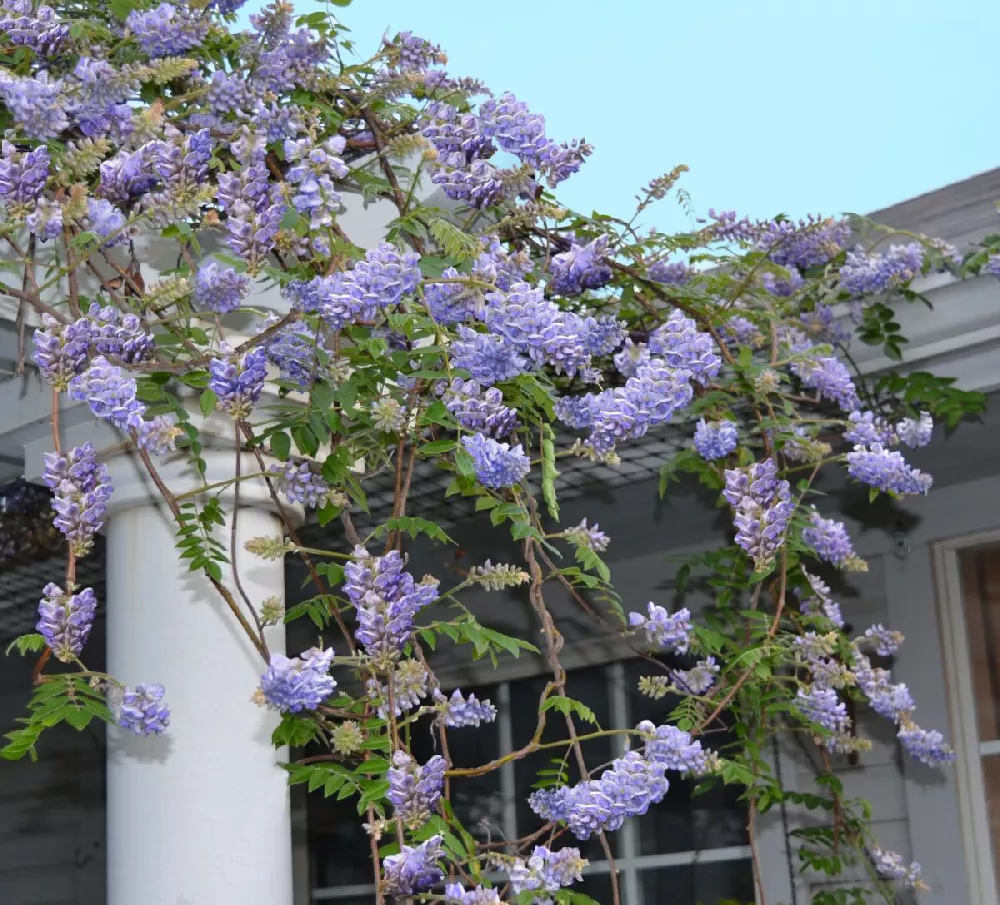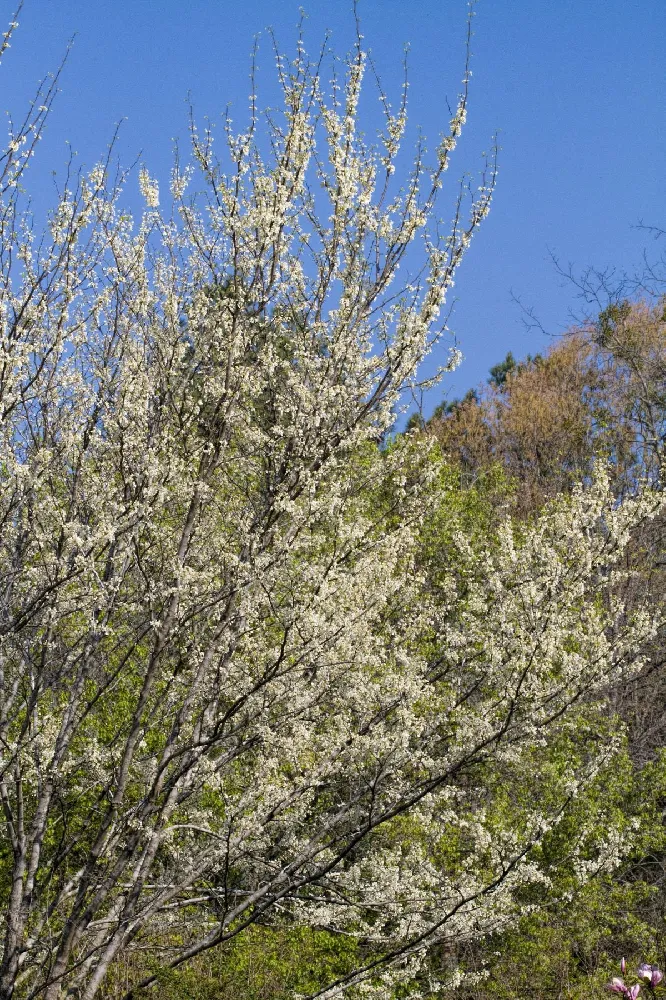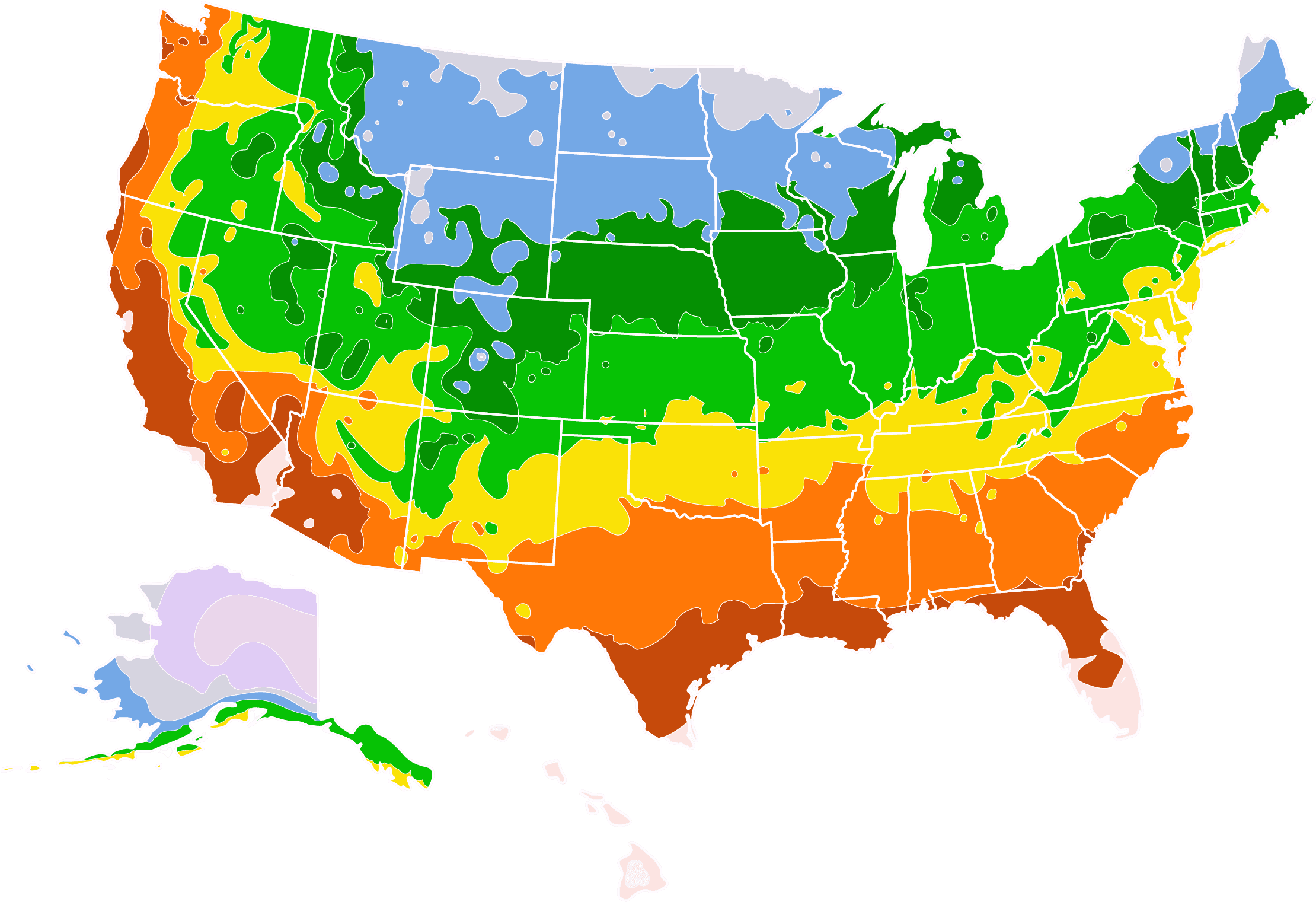Purple Wisteria for Sale - Buying & Growing Guide
If you want a flowering plant that can climb quickly on any trellis, then Wisteria sinensis is the species for you. Commonly known as purple wisteria, this plant has long dangling flowers that are its main feature. These plants are known for their vigorous growth and their long lifespan. They also add pleasant fragrances to the air wherever they grow. The flowers arrive in spring and make a bold impression when they grow in large groups.
- Astounding purple flowers are fragrant and dangle from the branches.
- Vigorous climbing plant that can quickly cover a pergola or arbor.
- Has a long lifespan and can grow to more than 30 feet.
Enter your zip code to find nearby stores that may carry this plant.
Plant Care
Sunlight

Grows in full sunlight or partial sunlight, but full sunlight is best.
Watering
Water regularly during establishment. Then, water occasionally, such as in times of drought.
Fertilizing

A single annual application will be enough. Phosphorus is most important for flowering.
Planting and Care
Planting instructions
While it will survive in partial shade conditions, it is better for purple wisteria to grow where there are at least six hours of sunlight per day. That added light will help this plant develop its flowers. The location you choose should also have some wind protection, as this plant’s early flowers can be susceptible to a late-season winter storm. In nearly all cases, you’ll want to plant this species near some sort of garden structure. Then you can train it to climb that structure and take on its most impressive form.
Watering and nutrients
You’ll need to water your purple wisteria regularly during its initial growth stage. At that time, it may be necessary for you to give water about once every three days. Once your plant is older, it will need much less water and will be somewhat drought-tolerant at times. Overall, purple wisteria does not need a lot of fertilizer. If you choose to fertilize yours, do so once per year. When you do, use a fertilizer with plenty of phosphorus, as that is the micronutrient that influences flowering the most.
Pruning
You should prune your purple wisteria at least twice per year, once in winter and once in the summer — more often if needed. When you prune, remove any branches that are diseased or that show other signs of distress. Pruning is needed if you want to keep purple wisteria under control. Don’t be afraid to take off too much, as this plant responds well to hard pruning and will bounce back with plenty of new growth.
Pests, diseases, and animals
Problems with both disease and pests can arise with purple wisteria. Regarding disease, canker is most common. Purple wisteria can also experience mineral deficiencies and may respond poorly to excessive amounts of nutrients. When growing this plant, you’ll also need to watch out for infestations. Scale, borers, and aphids are among the insects that can use purple wisteria as a host. The best way to prevent those issues is to plant your wisteria in an ideal location and give it the care and growing conditions it needs.
Achieving maximum results
The key to growing purple wisteria is controlling its growth. Without close attention, this plant can quickly expand and begin to compete with other plants in your garden. Pruning this plant multiple times each year is the best way to keep it under control. You should also be aware that purple wisteria is an invasive species in many parts of the United States. For that reason, you should plant it with care and only where it is permissible to do so.
FAQs
Is purple wisteria invasive?
Although it is an attractive plant, purple wisteria is also an invasive species in many parts of the United States. This plant comes from Asia and has a vigorous growth habit, which makes it a threat to native plant species. Currently, 19 states in the country list this plant as invasive. However, there is a different species of wisteria, called American wisteria, which you may be able to plant as a replacement for the invasive varieties.
Can you transplant purple wisteria?
Transplanting a wisteria can be difficult for several reasons. The first is that these plants can become quite large, making them difficult to relocate. Also, mature purple wisteria plants often do not respond well to transplanting and may die after it takes place. If you want to transplant one of these plants, it is best to do it when the plant is young. Transplanting at a young age gives purple wisteria the best chance to adapt to its new environment.
Why won't my purple wisteria bloom?
There are a few reasons why a purple wisteria may not bloom. Ironically, too many nutrients, mainly nitrogen, can discourage blooms. Location is another possible problem; purple wisteria also may not bloom if it is not getting enough sunlight. Another consideration is the age of the plant. Purple wisteria takes several years or more before it is mature enough to flower.
Compare Similar Products
Customer Reviews
 Great purchase
Great purchaseMy trees came healthy and well packed.
You can't add more Product Name - Product size to the cart.
OK









